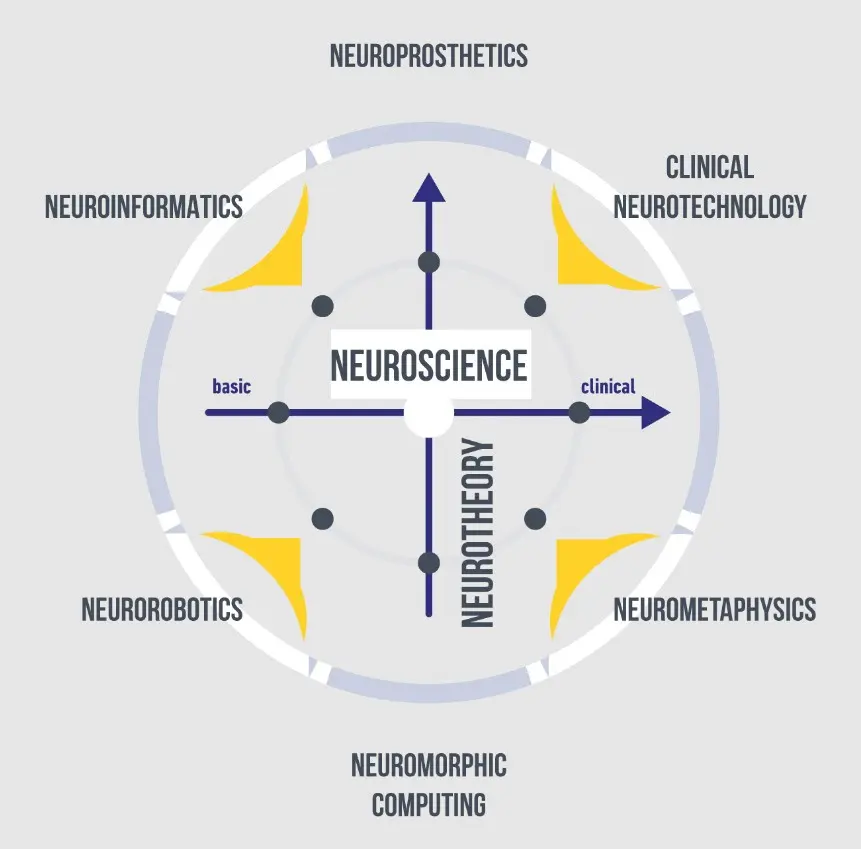NeurotechEU envisions neurotechnology as providing strategic bridges between various disciplines, including robotics, medicine, artificial intelligence, neuroscience, and social sciences, among many others, arranged along eight different dimensions, and aims at seamless mobility for students, research, and staff to study, teach, do research and innovate.
With our collaborative excellence in neurotechnology, we can work towards the newest technologies from, for, and with the brain.
The specific expressions of Neurotech can take many forms, including bioelectronics, brain-computer interfaces, neuromodulation methods using electrical, chemical, optical, or sound-based coupling, implantable devices, neuromorphic hardware and control, wearables, neurofeedback systems, neuroprosthetics, non-invasive modulation using AR/VR/XR methods and methods for cognitive augmentation.

To advance this range of possibilities we should define the map on which they are placed. NeurotechEU posits an eight-dimensional space that defines the envelope of current and future research, education, and application of neurotechnology:
- empirical and clinical neuroscience
- theoretical neuroscience
- neuromorphic computing
- neuromorphic control /neurorobotics
- neuroinformatics
- neuroprosthetics
- clinical neurotechnology
- neurometaphysics (neurophilosophy, neurolaw, neuroethics, neuroaesthetics, neurodesign)